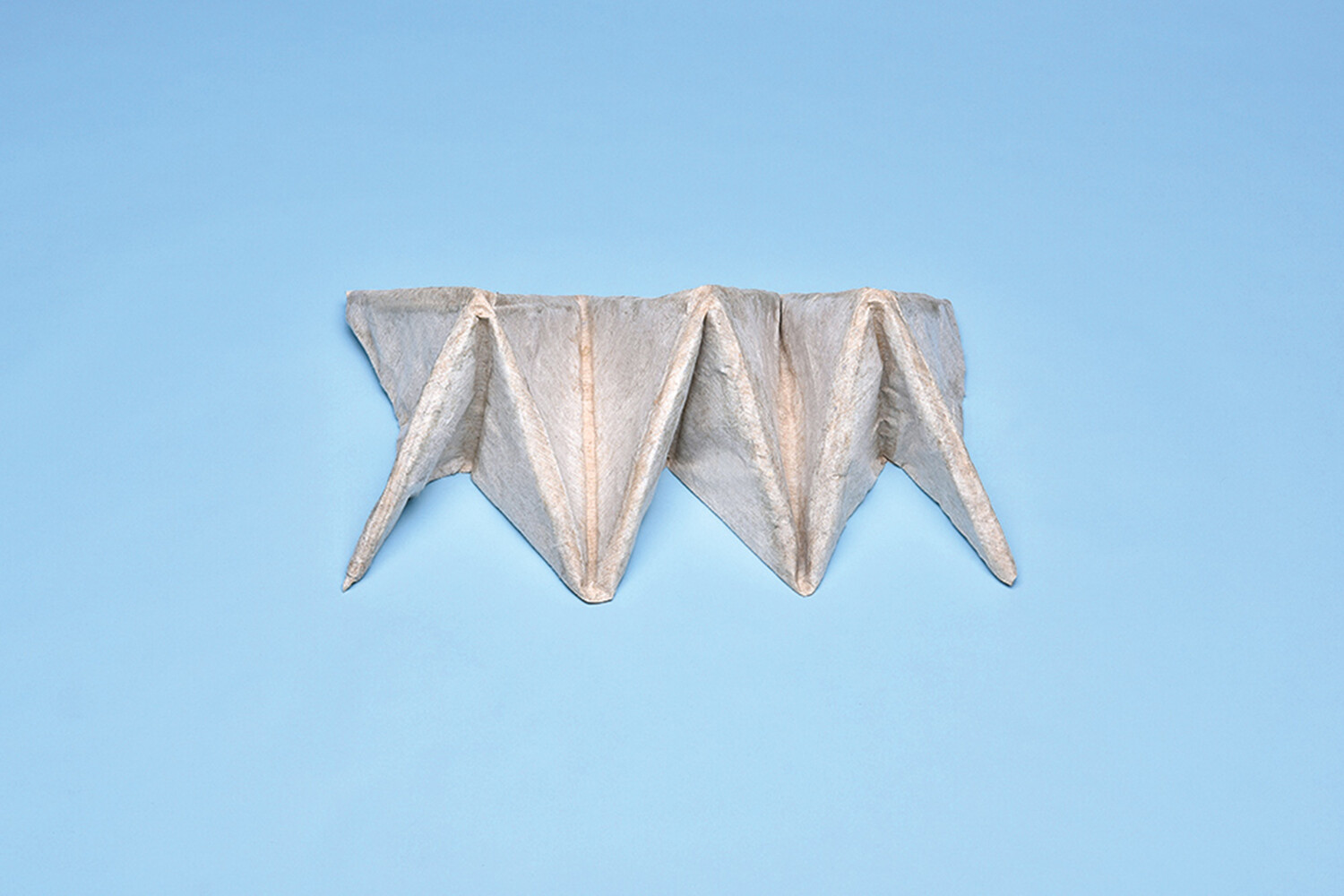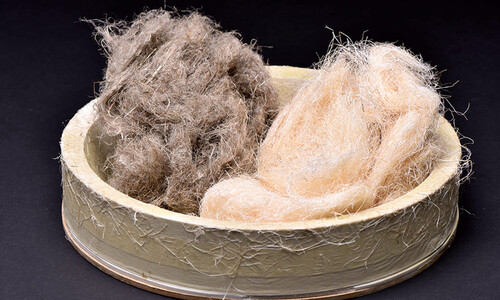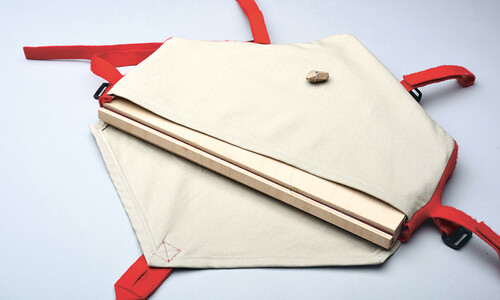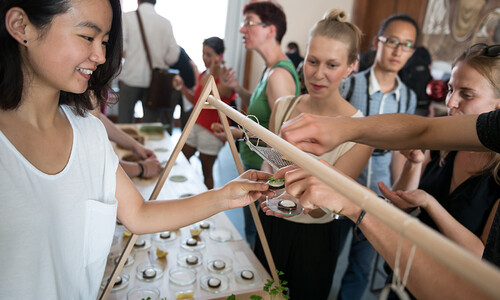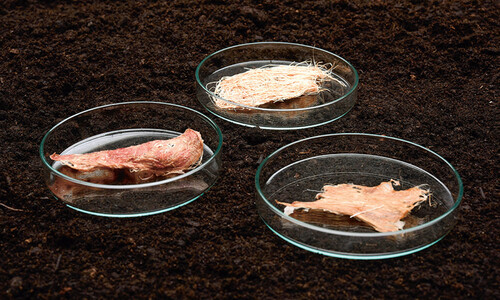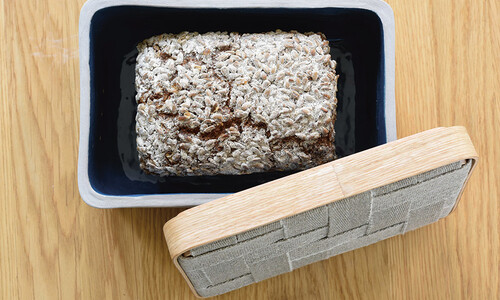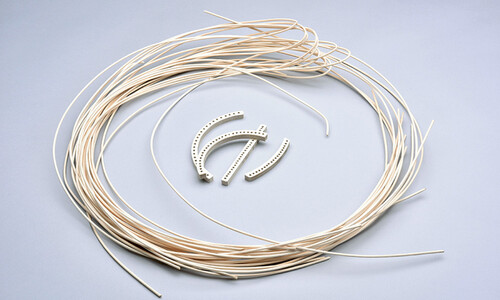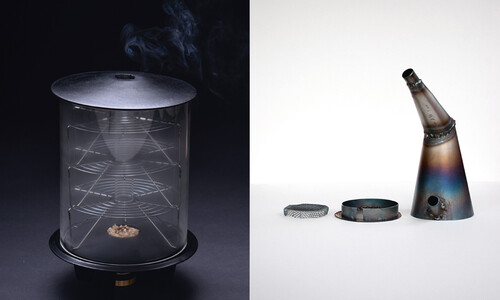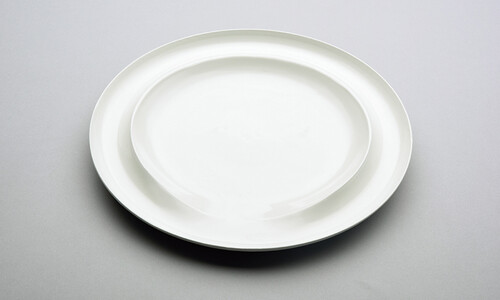The Lausitz picnic blanket is constructed with a thick wool fleece inserted in individual triangular segments on the inside, providing insulation against ground cold and comfortable padding for sitting. On the outside, it is encased in a layer of bio-plastic combined with a thin flax fleece. The multidirectional fibers stabilize the plastic in every direction, while the plastic prevents the fleece from deforming or tearing. This allows the composite to achieve stability and stiffness with minimal material usage. Its surface is durable, dirt-repellent, and easy to clean, making the blanket suitable for any type of ground.
Its properties result from the specific method of fabrication, developed through extensive test series. The inner and outer layers are crucial, as they enable the balance between protection and padding, stiffness and flexibility.
Production involves coating the first layer of thin flax fleece with the bio-plastic mixture made of water, starch, vinegar, glycerin, and baking powder. Next, the pre-cut volumetric wool fleece triangles are positioned in the right places, followed by the second layer of flax fleece. The entire structure is then pressed so that the three layers remain firmly bonded together through the bio-plastic. The connecting ribs between the triangles remain more flexible in relation to the padded areas, forming the folding lines. Using this technique, a wide range of foldable products could be created, such as clothing, bags, tents, and many more.
The plastic-textile composite not only creates an unusual material aesthetic but also enables polygonal origami folding. This gives the picnic blanket a distinctive look. The practical advantage: it can be folded and unfolded easily and precisely. Depending on the mode of transport, the final shape (square, rectangle, or triangle) — and therefore its size — can be varied. The blanket is suitable both for cycling trips (attached to the bicycle frame) and for hiking.
The picnic blanket is made entirely from natural, renewable, and biodegradable raw materials that are either native to the Lausitz region or readily available. Its properties also respond to the regional characteristics of the Lausitz, with its highly diverse natural and artificial landscapes. Not only the beauty of the original nature, but also the surreal areas of open-pit lignite mining and their recultivation shape its identity and define its experiential value.
